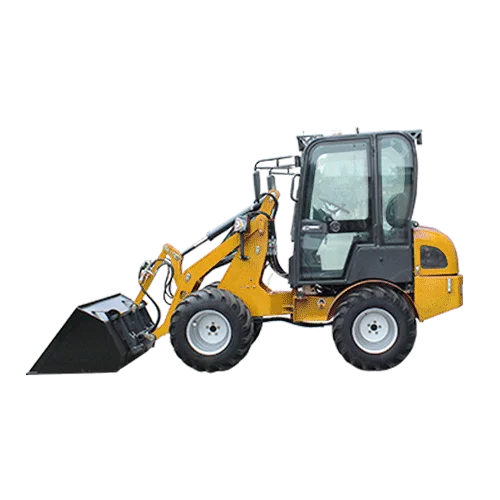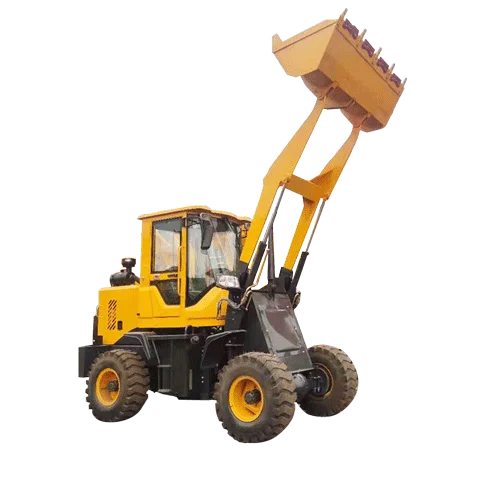Introduction

In today’s rapidly evolving industrial landscape, efficiency and productivity are critical to maintaining competitiveness. The emergence of dual loaders represents a significant leap forward in optimizing workflows across various sectors. This blog delves into the transformative impact of dual loaders, exploring their functionalities, applications, benefits, implementation considerations, and real-world case studies.
Understanding Dual Loaders
What are Dual Loaders?
Dual loaders are sophisticated pieces of machinery designed to handle simultaneous loading and unloading tasks. Unlike traditional loaders that operate sequentially, dual loaders incorporate advanced mechanisms to execute both tasks concurrently, thereby enhancing operational efficiency.
How Dual Loaders Work
Typically equipped with dual arms or compartments, dual loader can independently manage loading and unloading operations. This dual functionality allows for seamless coordination and simultaneous handling of materials, reducing cycle times and improving throughput.
Applications of Dual Loaders
Manufacturing
In manufacturing, dual loader streamline production lines by automating material handling processes. They can transport raw materials to assembly points while simultaneously removing finished products, optimizing overall throughput and minimizing idle time.
Warehousing and Logistics
Within warehousing and logistics, dual loaders expedite the movement of goods in and out of storage facilities. By loading incoming shipments while unloading outgoing orders simultaneously, they enhance inventory turnover rates and improve order fulfillment efficiency.
Construction
In construction, dual loader facilitate the efficient transport of building materials and equipment. They contribute to project timelines by expediting the loading of materials onto trucks or into designated areas, ensuring smooth and continuous workflow on-site.
Mining
In mining operations, dual loader play a crucial role in extracting and transporting minerals. They enhance productivity by enabling continuous loading of ore onto conveyor belts or trucks while simultaneously removing waste materials, optimizing extraction processes.
Advantages of Dual Loaders
Enhanced Productivity
Dual loaders significantly boost productivity by eliminating the downtime associated with traditional sequential operations. The ability to perform multiple tasks concurrently ensures continuous workflow and maximizes resource utilization.
Improved Operational Flexibility
The dual functionality of loaders enhances operational flexibility by accommodating fluctuating demand and production schedules. Businesses can quickly adapt to changing requirements without compromising efficiency or incurring additional costs.
Reduced Labor Costs
By automating dual tasks, dual loader reduce dependency on manual labor for material handling. This not only lowers labor costs but also minimizes the risk of human error, improving overall operational safety and reliability.
Implementing Dual Loaders: Considerations
Technology Integration
Integrating dual loaders into existing workflows requires careful planning to ensure compatibility with existing infrastructure and systems. Comprehensive testing and validation are essential to minimize disruptions during implementation.
Training and Support
Effective training programs are crucial for operators to familiarize themselves with dual loader functionalities, maintenance procedures, and safety protocols. Ongoing technical support ensures optimal performance and uptime of the equipment.
Safety Regulations and Compliance
Adherence to safety regulations and industry standards is paramount when deploying dual loader. Comprehensive risk assessments and safety protocols should be in place to mitigate potential hazards associated with automated material handling.
Key Features and Considerations for Dual Loaders
| Feature / Consideration | Description |
|---|---|
| Simultaneous Operations | Ability to handle loading and unloading tasks concurrently |
| Efficiency | Enhanced productivity and reduced downtime |
| Flexibility | Operational adaptability to varying demands |
| Automation | Degree of automation in material handling processes |
| Integration | Compatibility with existing infrastructure and systems |
| Maintenance | Requirements for upkeep and servicing |
| Safety | Compliance with safety regulations and protocols |
| Cost | Initial investment and long-term operational expenses |
Challenges and Limitations

Initial Investment Costs
The upfront investment required for acquiring and implementing dual loader may be substantial, particularly for small to medium-sized enterprises. However, long-term cost savings in labor and operational efficiency often justify the initial expenditure.
Operational Complexity
Managing dual loader operations demands specialized skills and knowledge. Training programs should focus on operator proficiency, equipment maintenance, and troubleshooting to ensure optimal performance and minimize downtime.
Conclusion
Dual loaders represent a paradigm shift in industrial automation, offering unparalleled efficiency, flexibility, and productivity gains across diverse sectors. As businesses continue to prioritize operational excellence and cost-effectiveness, the adoption of dual loader technology is poised to accelerate, driving innovation and sustainable growth.
FAQ
Q:What industries benefit most from dual loaders?
A:Dual loaders are particularly beneficial for industries such as manufacturing, logistics, construction, and mining, where efficient material handling is crucial for operational success and profitability.
Q:How do dual loader differ from traditional loaders?
A:Traditional loaders typically perform loading and unloading tasks sequentially, whereas dual loader execute these tasks simultaneously. This concurrent operation enhances efficiency by minimizing idle time and maximizing throughput.
Q:What factors should businesses consider before implementing dual loaders?
A:Key considerations include technological compatibility with existing infrastructure, training requirements for operators, compliance with safety regulations, and the initial investment costs versus long-term operational savings.

